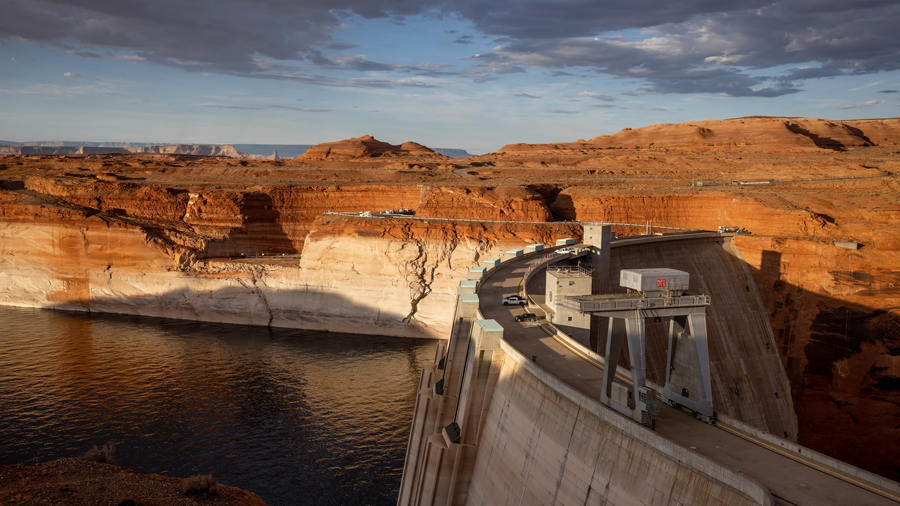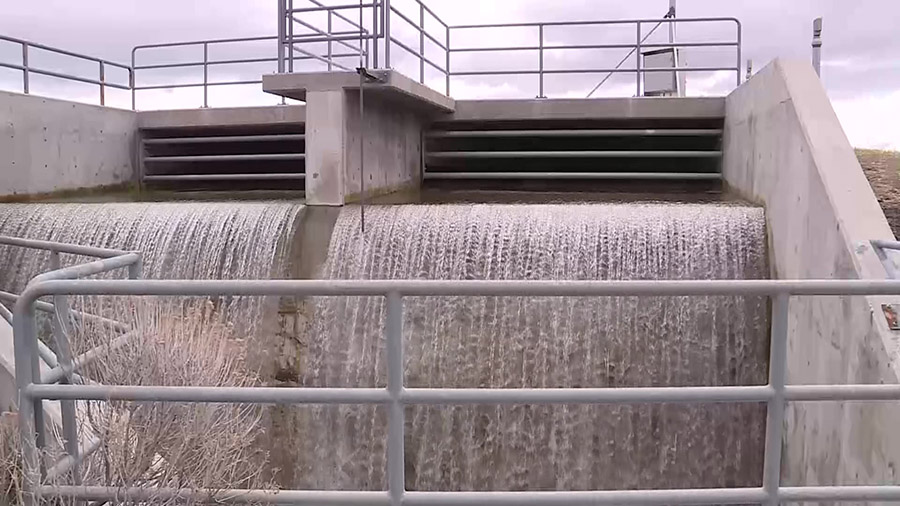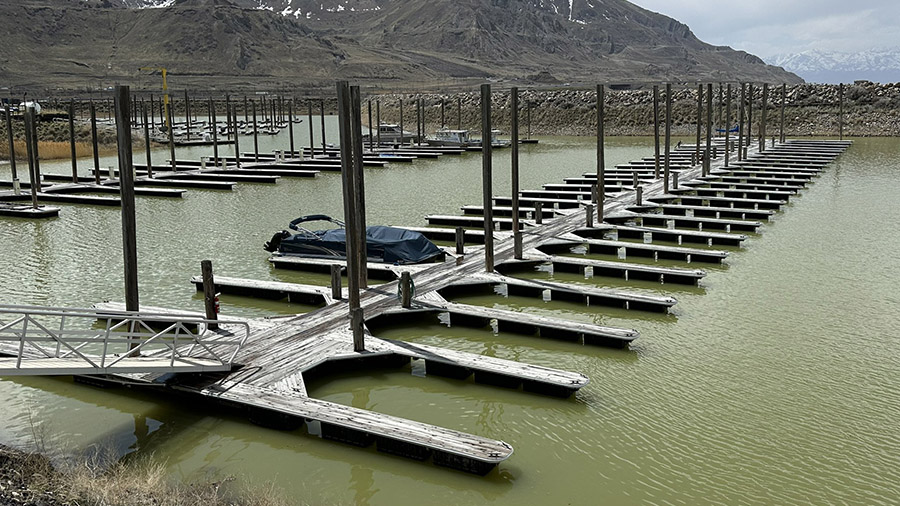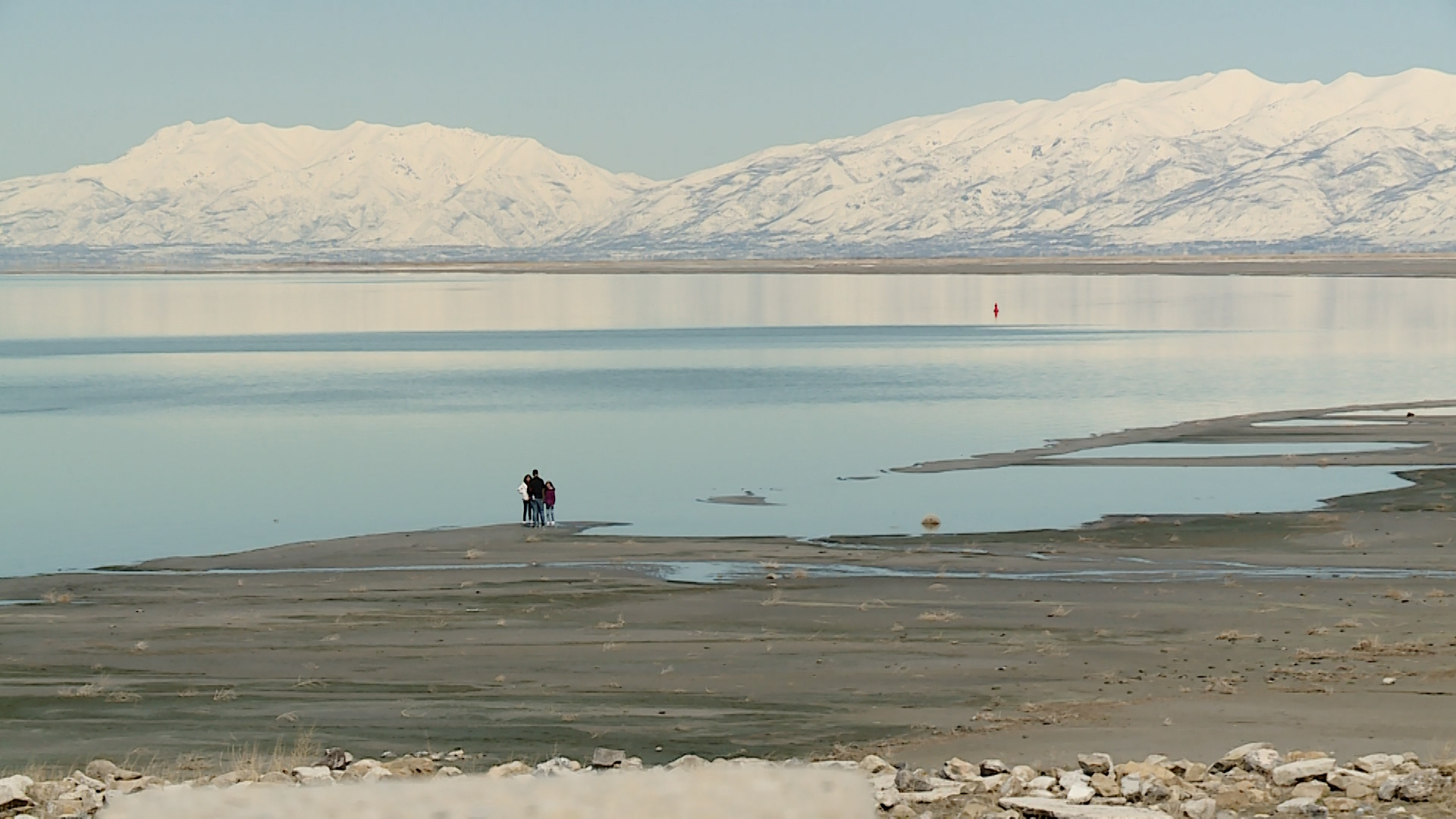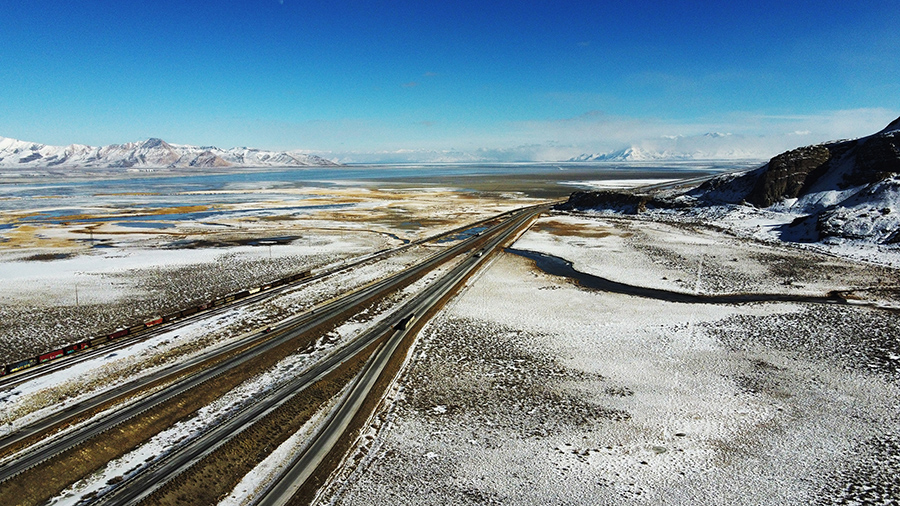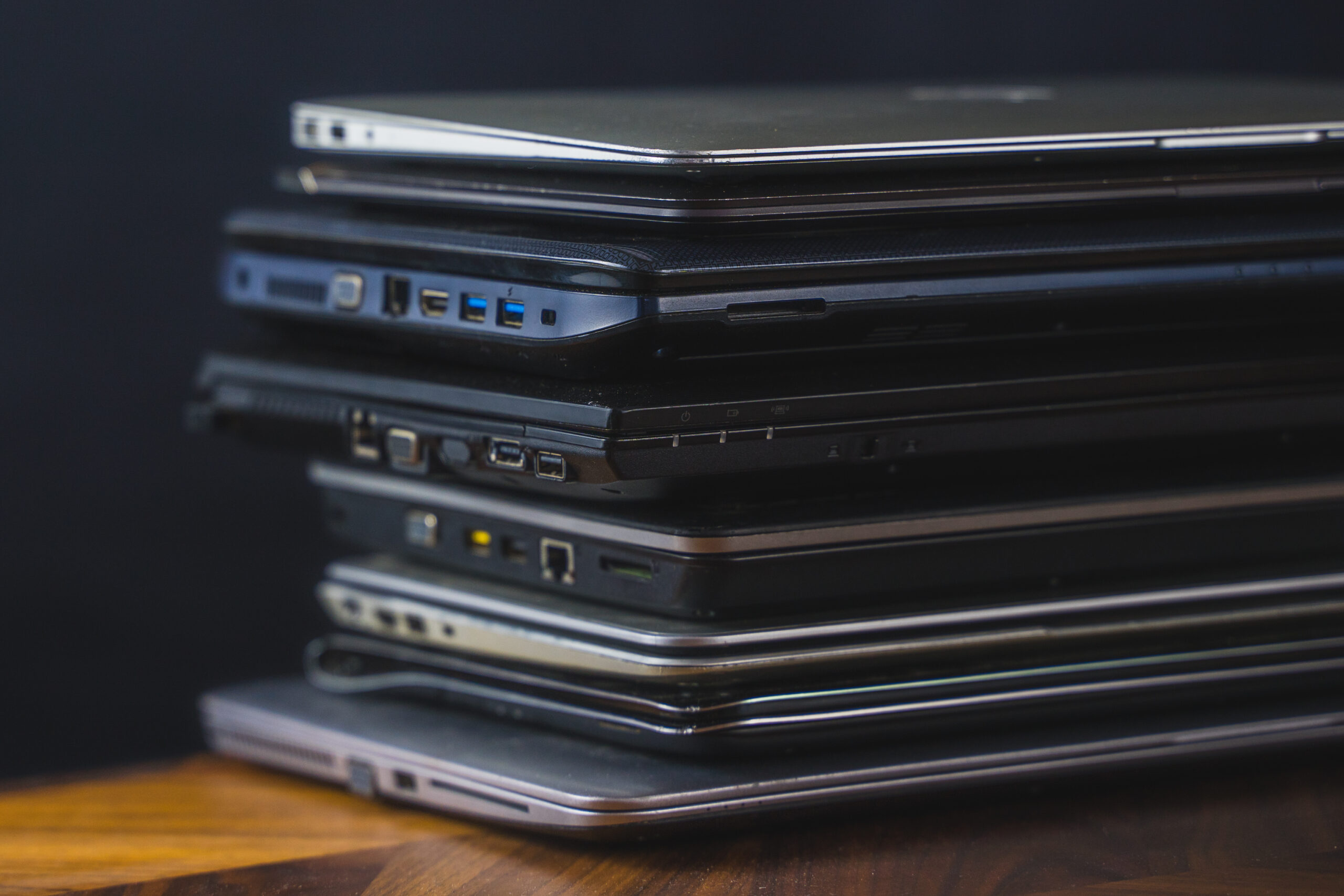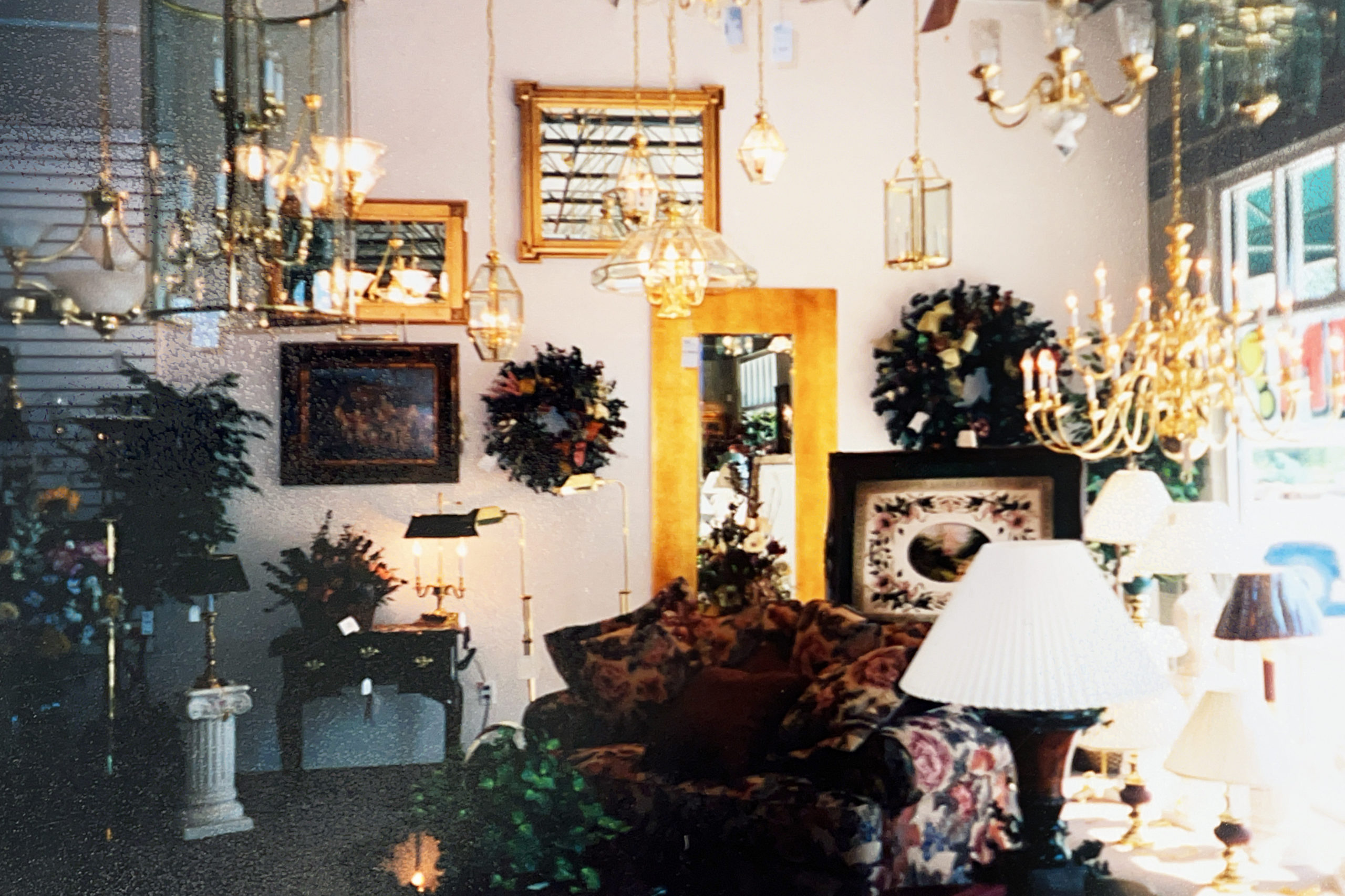GREAT SALT LAKE
Lawn gone: ‘Localscaping’ may save water, but can it rescue the Great Salt Lake?
Jul 26, 2022, 1:07 PM
SALT LAKE CITY — As Utah faces a future with booming population growth and demand for less reliable water, resource managers say a solution lies in our own backyards.
Whether the conservation measures they promote will benefit the beleaguered Great Salt Lake, however, remains an open question.
Arid Utah is sometimes maligned for its high per capita water consumption habits compared to other Western states. But regulators long have required the state’s water providers to submit conservation plans demonstrating how they’ll get their customers to cut back and delay costly new infrastructure projects.
The Jordan Valley Water Conservancy District, which supplies water to virtually every Salt Lake County community besides Salt Lake City and Sandy, has gone a step further. In recent years, it has pushed its customer cities to adopt outdoor watering and landscape mandates to help reduce lawns and wasteful watering.
“The traditional style of landscaping where we use mostly turf grass,” said General Manager/CEO Bart Forsyth, “can no longer be done.”

(Leah Hogsten | The Salt Lake Tribune) Bart Forsyth, general manager and CEO of the Jordan Valley Water Conservancy District at the Conservancy’s Garden Park, Thursday, July 14, 2022.
Jordan Valley can’t enact outdoor landscaping ordinances of its own because it doesn’t have land use authority. That’s why it relies on city partners. In 2019, the district drafted a model ordinance those cities can use that embraces a “localscaping” concept, which means 35% or less of residential landscapes and 20% of commercial landscapes can have turf. It insists on efficient irrigation technology, native or low-water vegetation, and no lawns in areas like parking strips or steep slopes that are difficult to water as well.
Water providers have tried to broadcast the benefits of localscaping for years. They’ve even provided financial incentives, planted idea gardens and offered classes to help property owners get on board.
Now, some cities are requiring localscaping — at least for new construction.
“You can only have a certain percentage of grass, if at all,” said Rachael Van Cleave, public information officer for South Jordan.
That growing suburban city became one of the first municipalities among Jordan Valley’s customers to adopt an outdoor water-saving mandate when it approved an ordinance last year.
“This ordinance is saying this is where we want to go into the future as we build homes,” Van Cleave said. “Let’s start from a water-wise perspective.”
The social problem
Localscape mandates might seem too little, too late, given Utah’s mounting water needs and the aridification of the West.
But they mark a major shift in cultural thinking, according to Jake Powell, a landscape and environmental planning specialist at Utah State University Extension.
In the past, the assistant professor noted, when people wanted to rip out their turf in favor of more drought-friendly landscaping, many city ordinances blocked them from doing so.
“There’s been a lot of sad stories of people wanting to do this work, even in the last decade,” Powell said, “and the city won’t allow them.”

(Leah Hogsten | The Salt Lake Tribune) A juvenile American goldfinch nibbles on coreopsis seeds at the Jordan Valley Water Conservancy Garden Park, Thursday, July 14, 2022.
In 2005, when a West Jordan resident heeded water-wise messaging and let her lawn fade in favor of more desert-compatible plants, she received citations from the city and stoked the ire of her neighborhood.
As recently as this spring, a Lehi resident’s homeowners association intervened, KSL reported, when he used gravel to landscape his front yard instead of traditional materials like sod and mulch.
The impact of thirsty lawns is clear when looking at water use across Jordan Valley’s service area. Older, denser cities like Midvale and South Salt Lake have lower demand, while newer cities with larger suburban lots use significantly more, including Draper and Bluffdale.
The Wasatch Front’s population keeps expanding, and water managers are under pressure to continue providing water at an affordable rate. Jordan Valley is trying to reduce its current per capita water use from an average of 199 gallons a day in 2018 to 187 gallons a day by 2030.
“The combination of drought and population growth is creating a perfect storm,” Powell said. “We’re realizing the landscapes we’ve adopted are unsustainable in our Intermountain West climate.”
Getting developers on board
Past outreach efforts about xeriscaping — characterized by low-water plantings — got confused, Powell said, with the notion of bland “zeroscaped” yards with little plants or visual interest at all.
“It got, in my opinion, a bad rap,” he said. “People thought it was weedy with maybe a wagon wheel, a bleached skull and gravel.”
Rebranding the movement as localscaping places an emphasis instead on the beauty and creativity that come with embracing Utah’s natural climate and native plants.
“Developers and builders were [initially] concerned about making changes to the way they have historically installed landscapes,” said Justun Edwards, director of public works for Herriman, which also adopted an ordinance last year. “But overall, the response has been positive. They understand the need and reason for doing it.”
Some developers are going further. Dave Jenkins, property manager for the Gardner Co., said he plans to have no Kentucky bluegrass at any future properties. The company is also in the process of tearing out turf at its existing properties, which mostly include commercial and multifamily projects.
“I just drive around and look at our reservoirs at the end of the year,” Jenkins said. “That’s really what got us going. When you go look at Deer Creek, or you look at all these drainages and how little water there is, we want to get ahead of it and do our part.”
Gardner’s customers, he added, have embraced the change.
“Our tenants love it,” Jenkins said, “because everyone’s paying attention to this now.”
Is localscaping enough to save the Great Salt Lake?
The outdoor landscaping mandates are relatively new, so it’s difficult to say how much water they’ll ultimately save. Efforts within Jordan Valley’s district also aren’t nearly as aggressive as mandates in other arid communities. The Southern Nevada Water Authority, which includes Las Vegas, is actively shedding grass, even in existing landscapes. All nonfunctional turf must be removed by the end of 2026. Mandates within Jordan Valley’s district apply only to new developments.
And Southern Nevada has a far more ambitious conservation goal: 86 gallons a person per day by 2035, according to its latest plan, versus Jordan Valley’s 187 gallons per day by 2030.

(Leah Hogsten | The Salt Lake Tribune) A juvenile female hummingbird searches for nectar on Variegated Trumpet Vine at the Jordan Valley Water Conservancy Garden Park, Thursday, July 14, 2022.
Still, Forsyth said, it’s not an apples-to-apples comparison, and Utah gets unfairly dinged for its reported water use. Nevada takes into account water it treats and returns to rivers and streams — called return-flow credits — while Utah does not.
“If I were to do that in my service area, which I’m going to start doing,” Forsyth said, “our per capita use would be much lower and compare much better to our Western neighbors.”
Like Nevada, Jordan Valley is rethinking landscapes to ensure it has enough water to meet the needs of all the new homes and businesses moving into its service area.
“We’re not promoting growth,” Forsyth said. “We’re providing water to meet the growth that’s projected.”
But in addition to growth, the Wasatch Front faces another issue other booming Western communities do not: the ticking time bomb that is the Great Salt Lake. If it continues to shrivel, the drying lakebed will likely turn into a toxic dust bowl. And if that happens, will people keep building houses here?
“I totally agree; maybe I’ll move,” Forsyth said. But he argued that around 2.9 million acre-feet of water evaporates off the Great Salt Lake each year (although that figure is likely lower, given the lake’s shrunken surface area).
“If I got everyone to stop watering and I can put another 30,000 [acre-feet], say, into the lake, we [still] have 9,000 acre-feet of water evaporating every day,” the district manager said. “It’s a pittance. And so we have to get our arms around that.”
Yet the region’s major water providers, including the Jordan Valley Water Conservancy District, Weber Basin Water Conservancy District and Central Utah Water Conservancy District, don’t factor the lake and its public health threat into their plans. Their conservation reports mention the Great Salt Lake only in passing — if they note it at all.
As Salt Lake Valley residents save water through more mindful landscaping measures, that water isn’t being sent to the Great Salt Lake. It’s banked in reservoirs. And the savings is used to justify more subdivisions.
“I’m not going to go on a limb and say that Lake Powell and Lake Mead will ever fill again,” Forsyth said of the two largest reservoirs in the Colorado River Basin to the south.
The district manager is optimistic about his own reservoirs, such as Deer Creek and Jordanelle, within the Great Salt Lake’s terminal basin.
“When we do get a normal year, those reservoirs are going to fill and probably spill,” Forsyth said. “The first one of the spills out of those reservoirs is the water that I saved, and that water can go to the Great Salt Lake.”

(Leah Hogsten | The Salt Lake Tribune) Bart Forsyth, general manager and CEO of the Jordan Valley Water Conservancy District talks about a water wise landscape at the Conservancy’s Garden Park, Thursday, July 14, 2022.
Climate models, however, indicate a future when Utah becomes hotter and drier, and its water supply becomes less reliable. The Great Salt Lake, meanwhile, has seen a long-term trend of decline, even with its ups and downs through the decades.
“A lot of our water bodies are over-allocated, meaning there’s more permitted use than natural water,” said Powell, the USU Extension specialist. “The Great Salt Lake is the [obvious] example because it’s a terminal water body. It’s the barometer for water use on the Wasatch Front.”
The major conundrum the Beehive State will have to solve, Powell said, is to ensure water saved isn’t just gobbled up by the next water user downstream. And that issue is entangled in a web of pioneer-era water laws, traditions, values and community planning.
Rather than feel despondent that decisions on their own home turf won’t move the dial, Powell said, Utahns should feel hopeful about cities embracing localscape mandates. It means long-held attitudes about water are shifting.
“Look at it from an exciting standpoint,” Powell said. “There’s an opportunity to really embrace the natural environment and vernacular of the Intermountain West, to meld our landscapes into natural landscapes.”
And the region’s residents are realizing that natural landscapes — which include Utah’s charismatic terminal lake — are worth celebrating.
This article is published through the Great Salt Lake Collaborative, a solutions journalism initiative that partners news, education and media organizations to help inform people about the plight of the Great Salt Lake — and what can be done to make a difference before it is too late. Read all of our stories at greatsaltlakenews.org.


